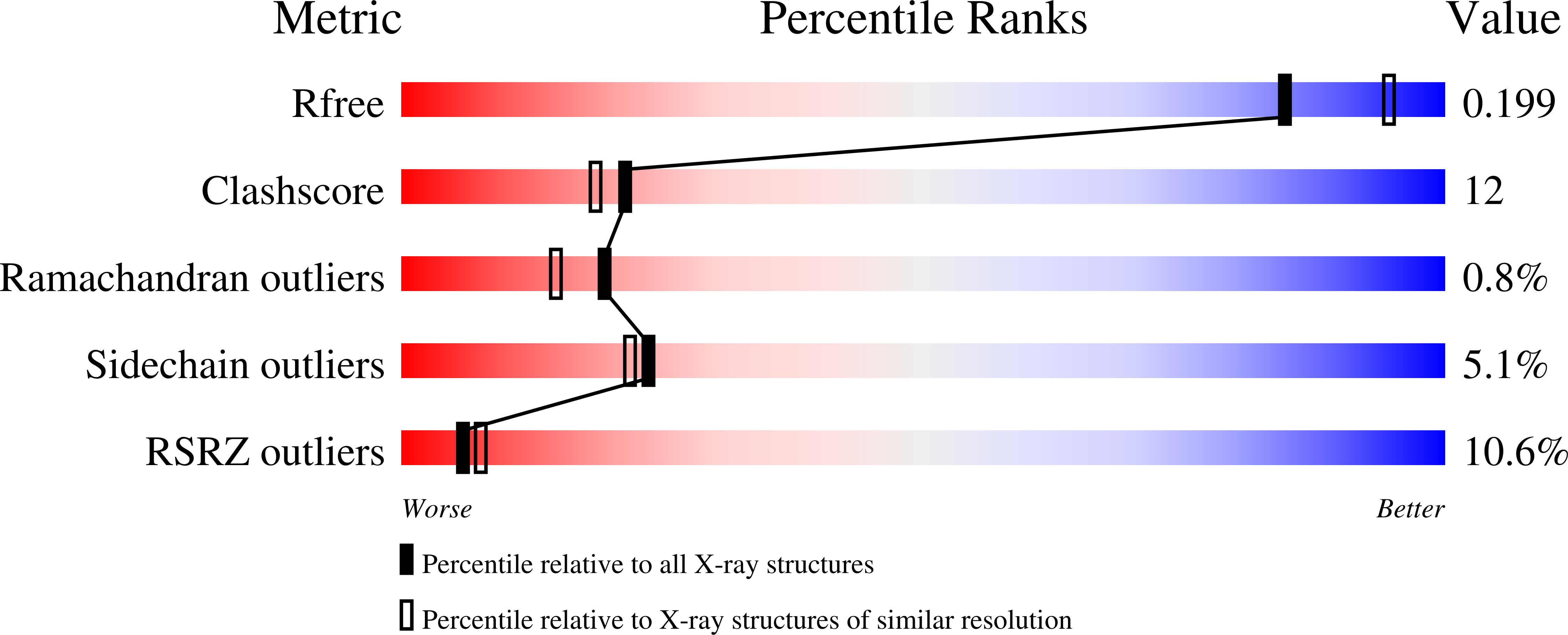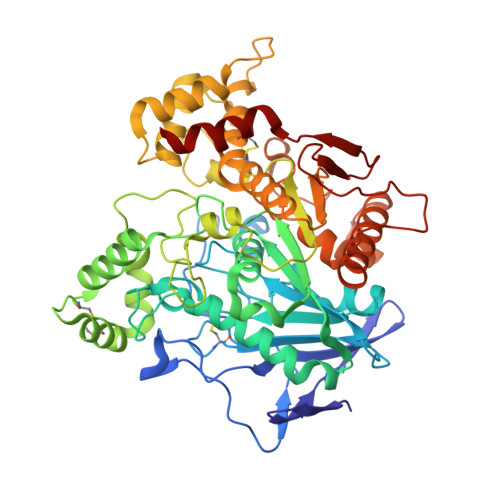Structural Study of the Complex Stereoselectivity of Human Butyrylcholinesterase for the Neurotoxic V-Agents.
Wandhammer, M., Carletti, E., Van Der Schans, M., Gillon, E., Nicolet, Y., Masson, P., Goeldner, M., Noort, D., Nachon, F.(2011) J Biol Chem 286: 16783
- PubMed: 21454498
- DOI: https://doi.org/10.1074/jbc.M110.209569
- Primary Citation of Related Structures:
2XQF, 2XQG, 2XQI, 2XQJ, 2XQK - PubMed Abstract:
Nerve agents are chiral organophosphate compounds (OPs) that exert their acute toxicity by phosphorylating the catalytic serine of acetylcholinesterase (AChE). The inhibited cholinesterases can be reactivated using oximes, but a spontaneous time-dependent process called aging alters the adduct, leading to resistance toward oxime reactivation. Human butyrylcholinesterase (BChE) functions as a bioscavenger, protecting the cholinergic system against OPs. The stereoselectivity of BChE is an important parameter for its efficiency at scavenging the most toxic OPs enantiomer for AChE. Crystals of BChE inhibited in solution or in cristallo with racemic V-agents (VX, Russian VX, and Chinese VX) systematically show the formation of the P(S) adduct. In this configuration, no catalysis of aging seems possible as confirmed by the three-dimensional structures of the three conjugates incubated over a period exceeding a week. Crystals of BChE soaked in optically pure VX(R)-(+) and VX(S)-(-) solutions lead to the formation of the P(S) and P(R) adduct, respectively. These structural data support an in-line phosphonylation mechanism. Additionally, they show that BChE reacts with VX(R)-(+) in the presence of racemic mixture of V-agents, at odds with earlier kinetic results showing a moderate higher inhibition rate for VX(S)-(-). These combined results suggest that the simultaneous presence of both enantiomers alters the enzyme stereoselectivity. In summary, the three-dimensional data show that BChE reacts preferentially with P(R) enantiomer of V-agents and does not age, in complete contrast to AChE, which is selectively inhibited by the P(S) enantiomer and ages.
Organizational Affiliation:
D¨¦partement de Toxicologie, Institut de Recherche Biom¨¦dicale des Arm¨¦es-CRSSA, 38700 La Tronche, France.























